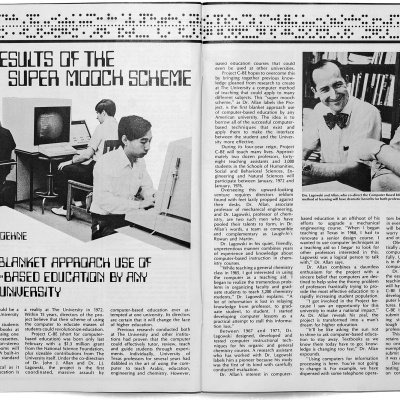Calories That Count
The Longhorn Dining Hall has overhauled the food that fuels UT’s student-athletes.


In the early 1990s, chicken-fried was the go-to method of preparation in the Longhorn Dining Hall. Batter and bubbling grease had a way of making foods like pounded flank steaks, pork chops, and otherwise unsavory chicken livers all the more palatable.
The cafeteria was also a men’s-only facility, and former women’s athletics director Donna Lopiano had noticed that female student-athletes were getting out of practices late in the evening and barely finishing a can of tuna before rushing off to study hall.
Lopiano made an agreement with then-men’s athletics director Darrell K Royal to open the dining hall to all UT athletes.
“My part was doing what I always do, which is making sure our kids were getting what they needed,” Lopiano says.
The student-athletes may have been eating, but they weren’t necessarily eating well. Menu items were simple and repetitive, and most pregame meals consisted of meat and potatoes—historical Austin steakhouse the Night Hawk was a common caterer.
When registered dietician Marsha Beckermann, BA ’74, BS ’77, was hired in 1991 to manage the dining hall, she was a self-described novelty. Beckermann’s charge was to give the food a nutritional makeover.
“The kitchen staff didn’t know how to season green beans without using bacon and butter,” Beckermann says.
Food was used primarily as a comfort—a reward, even—for all that hard work in the gym. Workouts, rest, and recovery were viewed as more important than diet.
“In terms of the quality of food choices, we struggled,” say Rock Gullickson, a former UT strength and conditioning coach who currently trains the St. Louis Rams. “Eventually, it just became so apparent that nutrition is the most important component when it comes to making changes to body composition. It’s all determined by what you eat.”
Over time, the mentality has shifted from simply feeding student-athletes to fueling them. These days, it’s impossible to find a sugary soda in the cafeteria that serves more than 500 student-athletes. Eliminating soft drinks was one of the first priorities of UT Athletics sports dietician Amy Culp when she took the job in 2012.
At Culp’s urging, the Longhorns realized they could better serve their athletes by giving them healthier food options. Andrea Kelly, the dining hall’s new executive chef who has cooked for Olympians and the Houston Texans, says that as society becomes more health-focused, her job gets easier.
“Higher-end specialty food is becoming more mainstream,” Kelly says. “I can order quinoa in bulk.”
Still, creativity is essential to producing hot-line choices that will entice a college athlete’s palate and still earn Culp’s stamp of approval. So instead of making mashed potatoes, Kelly offers smashed cauliflower and uses Greek yogurt to cream spinach.
She even occasionally serves fried chicken—only now the chicken is dredged in Panko breadcrumbs instead of flour and baked in the oven.
“It’s oven-fried, and no one knows the difference,” Kelly says. “My job is to serve food the kids will eat, but keep it healthy and appealing.”
Photo courtesy Thinkstock.






